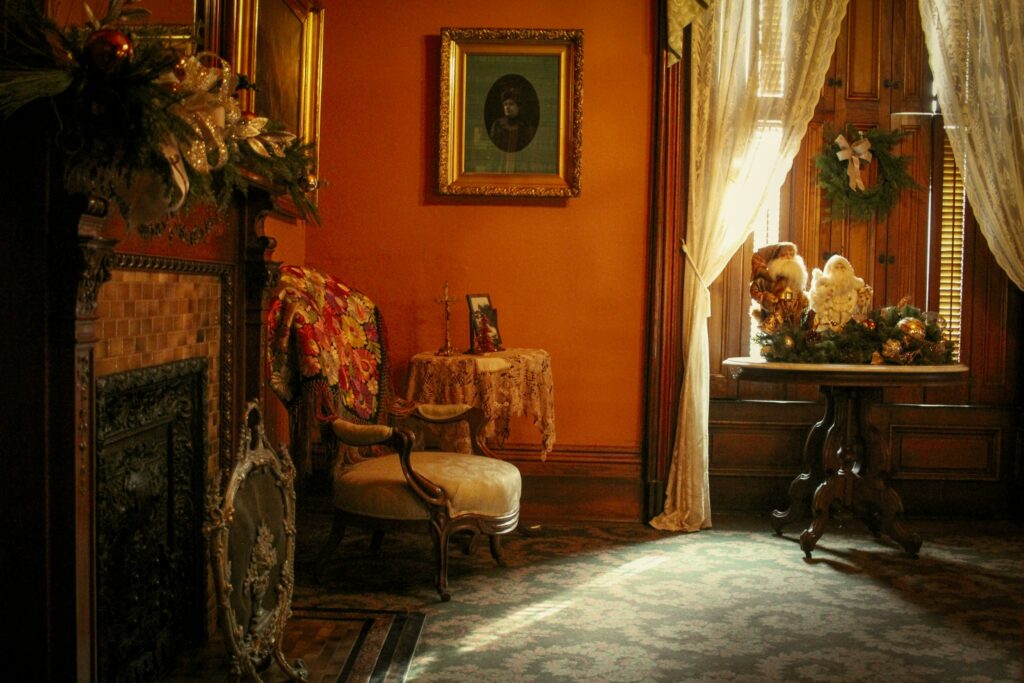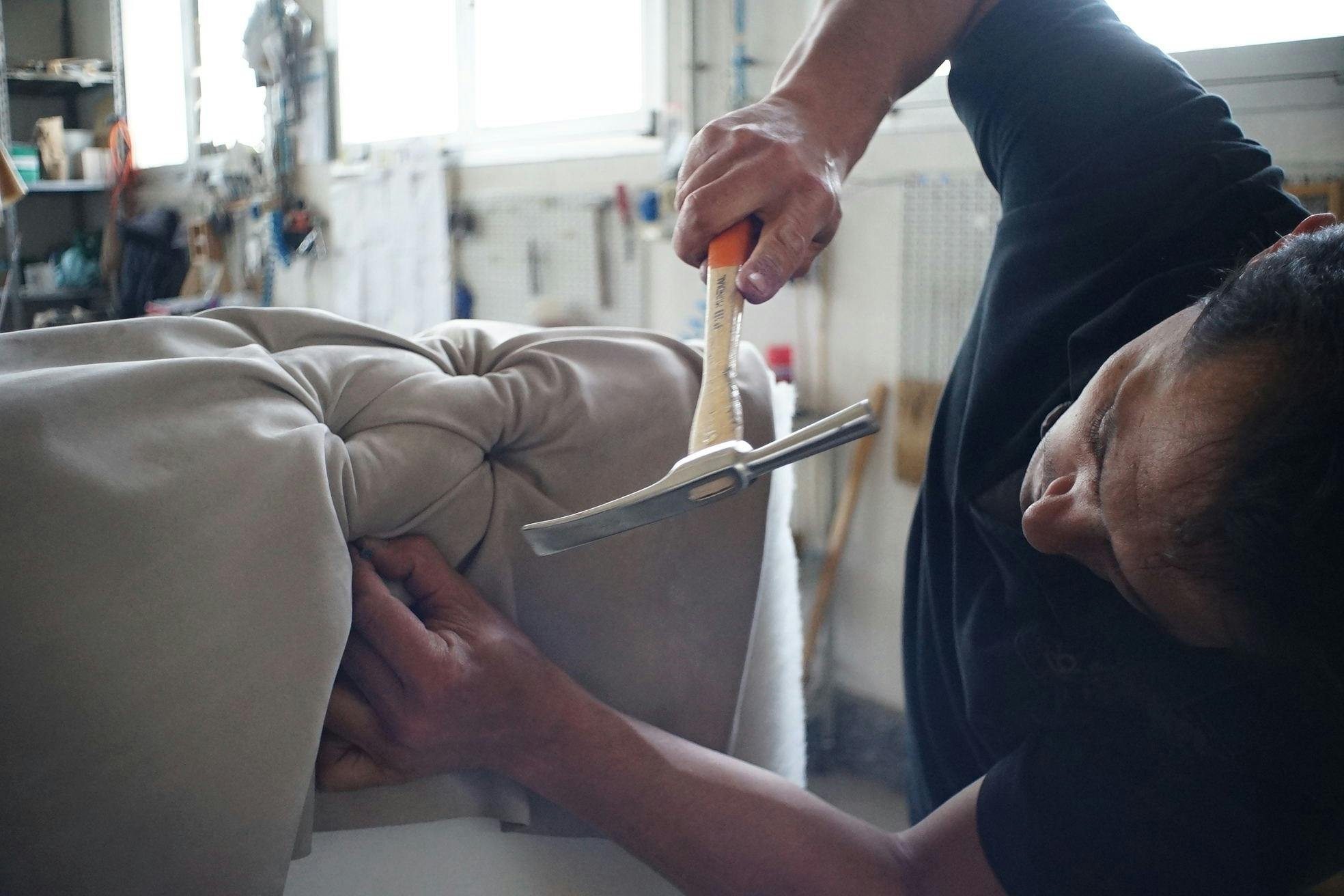The History and Evolution of Upholstery: From Craft to Modern Art
Upholstery, often regarded as a practical trade, is deeply rooted in history, intertwining with art, culture, and technological progress. From its beginnings in ancient civilizations to its role in today’s modern interiors, the evolution of upholstery tells a fascinating story of creativity, comfort, and craftsmanship. This article takes you on a journey through the origins, milestones, and contemporary practices of upholstery, highlighting its transformation over centuries.
Ancient Origins: The Birth of Upholstery
Upholstery’s roots can be traced back to ancient Egypt, where comfort was a symbol of wealth and status. Archeological discoveries show that Egyptians used animal hides, reed mats, and woven fabrics to cover wooden frames, creating the earliest examples of upholstered furniture. These designs prioritized durability and function, suitable for the hot, arid climate.
In Mesopotamia, artisans began experimenting with cushions and padding made of wool or natural fibers. This was not only for comfort but also to demonstrate power, as these items were often reserved for royalty and nobility.
The Middle Ages: Practicality Meets Ornamentation
During the Middle Ages (5th–15th century), upholstery began to develop as an art form. Furniture became more ornate, featuring hand-carved wooden frames adorned with luxurious textiles. Innovations included:
- Stuffed Seats: Wool, horsehair, and straw were used as filling materials for padding.
- Tapestry Covers: Elaborate woven designs depicted scenes from mythology and daily life.
- Decorative Trimmings: Tassels, fringes, and embroidery elevated the aesthetic appeal.
However, upholstery during this period remained a luxury, limited to castles and estates. Most common people relied on simple wooden benches and stools.
The Renaissance: The Age of Opulence
The Renaissance (14th–17th century) was a turning point in the history of upholstery. As art and culture flourished across Europe, furniture design became more intricate, reflecting the era’s love for beauty and refinement.
Key Advancements
- Silk and Velvet Fabrics: These luxurious materials became popular among the elite.
- Improved Cushioning: Upholsterers began layering different materials, such as feathers and down, to create softer, more comfortable seating.
- Gilded Frames: Gold-leaf applications on wood frames became a hallmark of Renaissance design.
Furniture was now both functional and artistic, often regarded as a statement of wealth and taste.
The Industrial Revolution: Upholstery for the Masses
The 18th and 19th centuries ushered in the Industrial Revolution, transforming upholstery from a handcrafted trade to a mechanized industry. This era marked significant advancements in tools, techniques, and accessibility.
Mass Production
- The invention of the sewing machine allowed upholsterers to produce furniture more quickly and efficiently.
- Factories began manufacturing standardized furniture pieces, making upholstered items more affordable for the middle class.
Materials Revolution
- The introduction of coiled springs revolutionized comfort and support.
- Synthetic dyes enabled a broader range of colors and patterns for fabrics.
Victorian Influence
The Victorian era (1837–1901) brought about lavishly upholstered furniture, often characterized by heavy drapery, deep button tufting, and richly patterned fabrics. Parlors and drawing rooms became focal points of homes, showcasing the growing importance of comfort and aesthetics.
The Modern Era: Functionality and Minimalism
The 20th century saw dramatic shifts in upholstery styles, driven by modernist movements and technological innovations. Designers began prioritizing simplicity, functionality, and versatility.
Art Deco and Mid-Century Modern
The Art Deco movement of the 1920s introduced sleek lines, geometric patterns, and bold colors. By contrast, the mid-century modern style of the 1950s emphasized clean lines, organic shapes, and muted tones.
Technological Breakthroughs
- Foam Rubber: Invented in the 1920s, foam rubber became a game-changer for cushioning.
- Synthetic Fabrics: Materials like nylon and polyester offered durability and easy maintenance.
Mass Customization
With advancements in manufacturing, consumers could now choose from a variety of fabrics, finishes, and designs, tailoring furniture to their preferences.
Contemporary Upholstery: Where Tradition Meets Innovation
Today, upholstery is a dynamic field that bridges traditional craftsmanship with cutting-edge technology. Modern upholsterers blend age-old techniques with contemporary materials to create furniture that is both stylish and sustainable.
Sustainability in Focus
As environmental concerns grow, the industry has embraced eco-friendly practices, such as:
- Recycled Fabrics: Textiles made from post-consumer waste.
- Biodegradable Fillings: Natural latex and coconut coir are gaining popularity.
- Reclaimed Wood: Frames crafted from salvaged materials reduce the demand for new timber.
Smart Furniture
The integration of technology has led to innovations like:
- Temperature-Regulating Fabrics: Materials that adapt to the user’s body temperature.
- Adjustable Cushions: Mechanized components that allow for customizable support.
Global Influences
Upholstery today reflects a blend of cultural styles, from Scandinavian minimalism to Moroccan bohemian aesthetics.
Upholstery as an Art Form
Beyond its functional aspects, upholstery has also become a medium for artistic expression. Contemporary designers and artisans experiment with bold patterns, unconventional materials, and avant-garde forms to create statement pieces.
Notable trends include:
- Patchwork Designs: Combining various fabrics for a whimsical, eclectic look.
- Hand-Painted Fabrics: Unique, one-of-a-kind pieces with hand-applied designs.
- Repurposed Materials: Turning discarded items like denim or canvas into stunning upholstery.
DIY Upholstery: Reviving the Craft
In recent years, the rise of DIY culture has sparked renewed interest in upholstery as a hands-on hobby. Homeowners and hobbyists alike are learning to restore and reimagine furniture, driven by:
- Online Tutorials: A wealth of resources makes it easier than ever to learn the basics.
- Cost Savings: DIY projects are often more affordable than buying new.
- Creative Freedom: Customizing furniture allows for a personal touch.
Challenges and Opportunities in Modern Upholstery
While upholstery continues to thrive, the industry faces challenges such as:
- Labor Shortages: As fewer young people enter the trade, there’s a growing demand for skilled upholsterers.
- Material Costs: The price of high-quality, sustainable materials can be prohibitive.
- Competition from Mass Production: Low-cost, factory-made furniture remains a dominant force.
However, these challenges also present opportunities for innovation and growth. Artisans who prioritize quality, sustainability, and unique designs can carve out a niche in the competitive market.
Conclusion: The Enduring Appeal of Upholstery
From its humble beginnings in ancient Egypt to its role as a cornerstone of modern interior design, upholstery has stood the test of time. Its evolution reflects changing tastes, technological advancements, and cultural shifts, yet its core principles—comfort, durability, and beauty—remain constant.
As we look to the future, upholstery continues to inspire creativity and innovation, offering endless possibilities for transforming furniture and spaces. Whether you’re a history enthusiast, a DIY hobbyist, or simply someone who appreciates fine craftsmanship, the world of upholstery is rich with stories, skills, and style.



